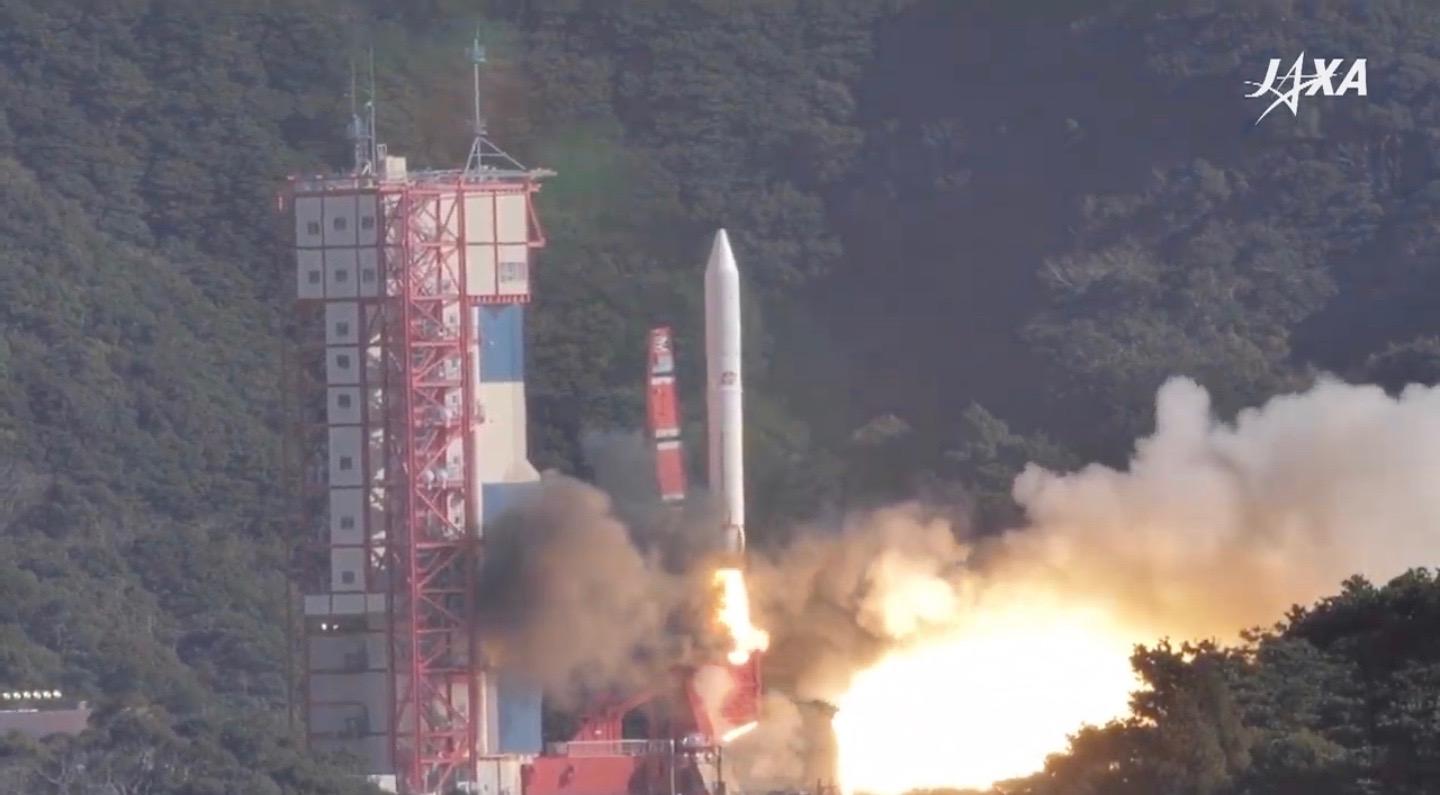Japan launched seven spacecraft to Earth orbit today (Jan. 17), including a little satellite designed to create dazzling artificial meteor showers.
The payloads rode to space aboard an Epsilon rocket, which lifted off from Uchinoura Space Center, on the Japanese island of Kyushu, at 7:50 p.m. EST (0050 GMT and 9:50 a.m. local Japan time on Jan. 18). If all goes according to plan, the seven spacecraft will settle into an orbit about 310 miles (500 kilometers) above our planet.
The launch was the first for the Japan Aerospace Exploration Agency's (JAXA) Innovative Satellite Technology Demonstration Program, which seeks to nurture and prove out advanced new space tech. [Satellite Quiz: How Well Do You Know What's Orbiting Earth?]
"Through these demonstration experiments, we intend to strengthen the international competitiveness of Japanese satellite technology, promote space utilization and generate innovation," JAXA officials wrote in the mission's press kit.

The primary payload on today's launch was the Rapid Innovative Payload Demonstration Satellite 1 (RAPIS-1), whose boxy body measures about 3.3 feet (1 meter) on a side. In a first for JAXA, the agency consigned the manufacture and operation of RAPIS-1 to a startup — the Japanese company Axelspace.
RAPIS-1 carries a variety of technology demonstrations, including a thin-membrane, paddle-shaped solar array; small thrusters that use low-toxicity propellant; a low-cost particle sensor; and "deep-learning" software that will aid attitude control and Earth observation.
The six ride-along satellites include ALE-1, which was built by the Tokyo-based company Astro Live Experiences. ALE-1 is 24 inches long by 24 inches wide by 31 inches tall (60 by 60 by 80 centimeters) and is packed with 0.4-inch-wide (1 cm) particles engineered to create a sky show when they come down through Earth's atmosphere.
Get the Space.com Newsletter
Breaking space news, the latest updates on rocket launches, skywatching events and more!
ALE-1 and a few follow-on craft will "investigate feasibility of man-made meteors and [their] marketability," as well as provide data about Earth's upper atmosphere, Astro Live Experiences representatives wrote in a project description.
Those first artificial meteors won't flare up for another year or so. ALE-1 will eventually deploy a drag-increasing "membrane," which will help lower the satellite's altitude by about 62 miles (100 km). Then, in the spring of 2020, it will deploy its first pellets — over the Japanese city of Hiroshima, if everything goes according to plan. The resulting meteors should be visible to more than 6 million people, across a region about 125 miles (200 km) wide, Astro Live Experiences representatives said.
The other secondary payloads that launched today are the Earth-observation craft MicroDragon and RISESAT; OrigamiSat-1, which will demonstrate a "multifunctional deployable membrane structure"; Aoba VELOX-IV, which aims to prove out thruster and imaging tech for future moon missions; and NEXUS, a tiny (3.9 by 3.9 by 4.3 inches, or 10 by 10 by 11 cm) cubesat that will demonstrate three new types of transmitters for use in amateur satellite communication.
These six spacecraft range greatly in mass, from NEXUS' 2.9 lbs. (1.3 kilograms) to 150 lbs. (68 kg) for ALE-1.
This evening's launch was the fourth for an Epsilon rocket, which debuted in 2013. The 79-foot-tall (24 m) booster can loft up to 1,543 lbs. (700 kg) to a 310-mile-high circular orbit.
No previous Epsilon launch had ever launched more than one satellite at a time, JAXA officials said.
Mike Wall's book about the search for alien life, "Out There" (Grand Central Publishing, 2018; illustrated by Karl Tate) is out now. Follow him on Twitter @michaeldwall. Follow us @Spacedotcom or Facebook. Originally published on Space.com.
Join our Space Forums to keep talking space on the latest missions, night sky and more! And if you have a news tip, correction or comment, let us know at: community@space.com.

Michael Wall is a Senior Space Writer with Space.com and joined the team in 2010. He primarily covers exoplanets, spaceflight and military space, but has been known to dabble in the space art beat. His book about the search for alien life, "Out There," was published on Nov. 13, 2018. Before becoming a science writer, Michael worked as a herpetologist and wildlife biologist. He has a Ph.D. in evolutionary biology from the University of Sydney, Australia, a bachelor's degree from the University of Arizona, and a graduate certificate in science writing from the University of California, Santa Cruz. To find out what his latest project is, you can follow Michael on Twitter.









